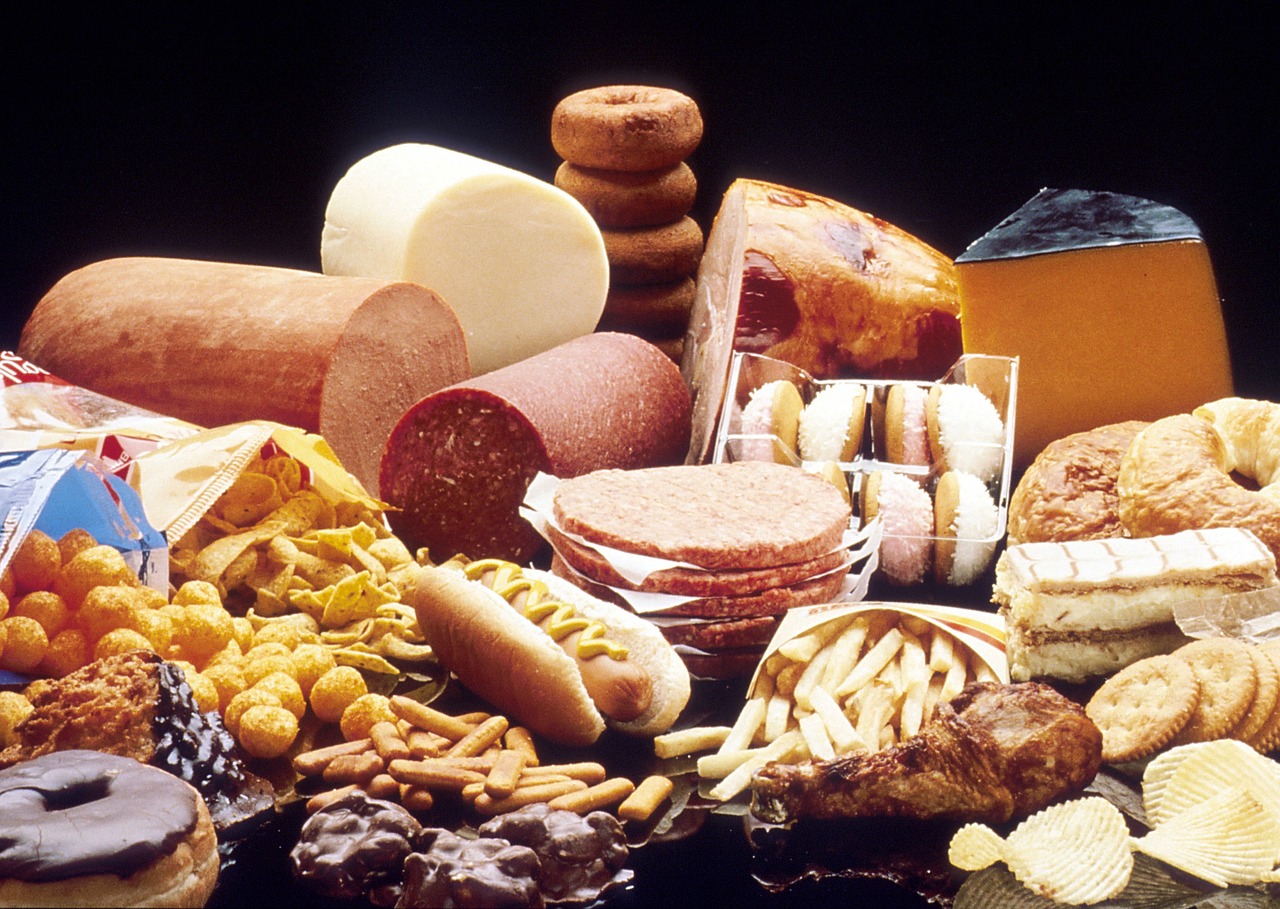
Cholesterol is a type of fat that is required by the body to create and maintains cells, to create steroids that we need to live, and to absorb vitamins A D and E.
Cholesterol and other types of fat come from the food we eat and are processed in the liver.
Fats are long chains of carbon, hydrogen and oxygen atoms bonded together. We call these hydrocarbon chains.
Different fats have different structures to these chains resulting in different properties and different uses in the human body.
Saturated fats have less double bonds between molecules and hence have a higher hydrogen content than unsaturated fats. These are less healthy.
Unsaturated fats have more double bonds between molecules and hence have a lower hydrogen content than saturated fats. These are more healthy.
Why is this important?
Too much fat in our diet leads to clogging up of our blood vessels. It can also lead to excess energy intake which is then deposited as body fat.
When blood vessels are clogged up this leads to a reduction in blood supply to our organs which causes damage.
A sudden loss in blood supply can be catastrophic. Examples of a sudden loss in blood supply are strokes and heart attacks.
How much is too much?
On average your saturated fat intake should be less than 1/3rd of your daily fat intake.
The average man should have no more than 30g saturated fats per day.
The average women should have no more than 20g saturated fats per day.
1 gram of fat tends to contain around 9kcal or 37kj of energy. This is a lot of energy in comparison to other food types.
What should I be looking for when I buy food and drink?
In the UK, food and drink labels are required by law to detail the amount of fat content.
High fat is classed as more than 17.5g of fat per 100g
Low fat is classed as 3g of fat or less per 100g
(1.5g of fat per 100ml for liquids or 1.8g of fat per 100ml for semi-skimmed milk)
Fat-free is classed as 0.5g of fat or less per 100g or 100ml
Saturated fat is classed as high when there are more than 5g of saturates per 100g
Saturated fat is classed as low when there are 1.5g or less of saturates per 100g
(0.75g per 100ml for liquids)
Saturated fat-free is classed as 0.1g or less of saturates per 100g or 100ml
Examples of foods high in saturated fats
- Butter, ghee, lard, dripping and goose fat
- Hard margarine
- Fatty meat and meat products
- Full fat cheese, milk, creams, yogurt and ice cream
- Coconut, palm oils and coconut cream
- Chocolate, biscuits, cakes and pastries
Examples of foods low in saturated fats or those that help to lower your cholesterol level
- Olive, sunflower and rapeseed oil and spreads
- Avocados
- Some nuts
- Almonds
- Brazils
- Peanuts
- Pistachios
- Cashews
- Walnuts
- Oily fish
- Mackerel
- Kippers
- Herring
- Trout
- Sardines
- Salmon
- Porridge
- Oatbran, Oat breakfast cereals, oatcakes
- Bread made with 50% oat flour or oat bran
- Pearl barley
- Beans
- Adzuki beans
- Baked beans
- Black beans
- Black-eyed peas
- Butter beans
- Cannellini beans
- Chickpeas
- Edamame beans
- Lima beans
- Mung beans
- Navy beans
- Pinto beans
- Split peas
- White beans
- Red lentils, green lentils
- Vegetables rich in soluble fibre
- Okra,
- Aubergine,
- Citrus fruits,
- Turnip,
- Sweet potato
- Mango
- Unsalted soya nuts (roasted edamame beans)
- Soya alternative to milk, yoghurt, meat
- Tofu
What should my cholesterol blood result be?
The cholesterol blood test is broken down into a number of different parts.
– Total cholesterol. The total amount of cholesterol circulating in your blood. This should be < 5.
– Triglyceride. A measure of excess fats circulating in the blood. This varies with time after eating.
– LDL. A measure of the bad cholesterol content in your blood. This should be < 3.
– HDL. A measure of the good cholesterol content in your blood This should be > 1.
– Total:HDL ratio. The higher this number, the greater the risk of heart attacks and strokes. This should be < 6.
Calculating your risk
The likelihood of having significant heart and blood vessel disease can actually be calculated, taking into account such variables as your sex, blood pressure, age, whether or not you smoke and what your cholesterol level is. This is called the QRISK. A QRISK value of >20% is classed as high risk however we may use the cut off of 10% if you suffer from other conditions such as diabetes or high blood pressure.
Calculate your risk by using the link below…
